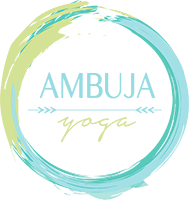If you’ve been practicing yoga for awhile chances are you’ve heard of yoga nidra. Yoga nidra is “yogic sleep” or as my husband calls it “advanced napping”. Sounds pretty good, right? You get to lie in Savasana (corpse pose) the whole time while you’re systematically instructed through a deep relaxation exercise. Yoga nidra guides you through the koshas, or layers of your being and drops you into deep relaxation where healing and true restoration can occur. The sequence of cues relaxes the body and awakens the unconscious and subconscious mind. The benefits of yoga nidra are plentiful and range from better sleep to reduced stress and beyond.
You don’t need to know what the koshas are to get all of the benefits of yoga nidra. Benefits of the practice are numerous and range from better sleep to stress reduction and beyond. Plus, anyone can practice yoga nidra and therefore receive its benefits.
The practice of yoga nidra can trace its roots back to India, where it was developed and expanded upon, most notably by the Bihar School. Yoga nidra has been studied across continents and the practice is backed by science… and I’m not talking about pseudoscience. In this post I will list out just a few of yoga nidra’s benefits. Also, if you’re interested in a free guided yoga nidra you’ll find a yoga nidra script here and a nature inspired yoga nidra recording here. Don’t worry if you fall completely asleep during the practice, it just means that your body needs to rest.
1.) Yoga Nidra Reduces Stress & Anxiety
Yoga nidra has been proven effective in reducing stress and anxiety. A 2018 study published in the International Journal of Yoga found that yoga nidra was more effective than meditation at reducing both cognitive and physiological symptoms of anxiety. In the United States there has been a dramatic increase in hospitalizations due to stress in both men and women. Chronically elevated stress hormones like cortisol and epinephrine lead to increased inflammation, heart disease, fatigue, stroke, sleep disorders, and chronic prain. It’s important that we make time for our health now, so we don’t have to make time for our dis-ease later.
Another study looked at Heart Rate Variability, which is a sign of autonomic nervous system balance and found that yoga nidra (alone or preceded by an asana practice) improved Heart Rate Variability. The practice of yoga nidra shifted the balance of the autonomic nervous system toward the parasympathetic nervous system. The parasympathetic nervous system is what governs our relaxation response, commonly referred to the “rest and digest” response.
2.) Your Body Has An Opportunity to Heal: Yoga Nidra Slows Down Your Brain Waves
Yoga nidra guides the student into the deepest state of sleep where the brain produces theta (4-7 hertz) and delta waves (1-3 hertz), but the student remains conscious throughout. According to Theta Healing, “Theta State is a state of very deep relaxation; it is used in hypnosis and during REM Sleep. The brain waves are slowed down at a frequency of 4-7 cycles per second…Theta waves are always creative, characterized by feelings of inspiration and very spiritual. It is believed that this mental state allows you to act below the level of the conscious mind.”
Delta waves on the other hand, are the slowest waves at 1-4 cycles per second and are experienced during deep dreamless sleep. When our brain waves have slowed down to the delta level, it is when our body has an opportunity to rest, restore and heal.
3.) Yoga Nidra Can Help Heal Trauma
Yoga nidra can be used to heal from trauma. According to an article in the Boston Globe, “In 2006, the Department of Defense conducted research at Walter Reed Army Medical Center on the efficacy of yoga nidra on soldiers returning from Iraq and Afghanistan with post-traumatic stress disorder. This led to the incorporation of yoga nidra into weekly treatment programs for soldiers in several VA facilities across the country.”
4.) Yoga Nidra Reduces Chronic Pain
Our bodies naturally want to heal and yoga nidra gives our body the time to do just that. Remember those delta waves I mentioned earlier? And the parasympathetic nervous system? Yoga nidra helps switch us out of doing and into being so we can rest. According to the same Boston Globe article before “the US Army Surgeon General endorsed yoga nidra as an intervention in treating chronic pain”. The practice of yogic sleep gives the body time to rest, recover and restore, which thereby brings down inflammation and improves the function of the immune system.
5.) Reduces PMS Symptoms
There have actually been a handful of studies on the efficacy of yoga nidra’s ability to reduce PMS symptoms. According to one recent study, “… patients with menstrual irregularities having psychological problems improved significantly in the areas of their wellbeing, anxiety and depression by learning and applying a program based on Yogic intervention (Yoga Nidra).”
So if you’re feeling low energy, anxious, depressed, or irritable carve out a little time for yoga nidra. When aunt “Flow” is in town, I’ve found it to be super beneficial. I’m less agitated, my energy improves, and I’m overall more “even” emotionally.
6.) You’ll Feel Rested: Yoga Nidra Improves Sleep and Reduces Insomnia
Yoga nidra improves sleep and reduces insomnia. Insomnia and sleep deprivation contribute to mental disorders, stress management (or lack there of), and immune suppression. The National Sleep Foundation recommends that adults and young adults get 7-9 hours of sleep every night. Yoga nidra trains the mind and body to relax and move more easily into the deeper states of sleep. Forty-five minutes of yoga nidra is equal to up to 3 hours of sleep!
Sleep is vital to our health and wellbeing. Poor sleep and insomnia can lead to more than just irritability and bags under your eyes. If you’re sleeping crummily (is that even a word?) you might experience:
- poor memory and trouble concentrating
- heart disease, heart attack & stroke
- increased blood pressure
- low libido
- weight gain
- diabetes
- a weakend immune system
- increased inflammation
Yoga nidra is a good way to supplement your sleep if you’re not sleeping well at night. You could try yoga nidra during your lunch break or give it a try right before bed — go ahead and crawl into bed and prepare yourself for a restful night of sleep.
7.) Reduces Symptoms of Type 2 Diabetes
The benefits of yoga nidra and other deep relaxation practices may even extend to those with type 2 diabetes. According to a recent Huffington Post article, “A recent study published in the Indian Journal of Physiology and Pharmacology found yoga nidra may reduce the symptoms of diabetes and help control blood glucose levels.”
8.) Plant The Seeds of Future Growth
As you can see, the benefits of yoga nidra are numerous. If you haven’t tried it already, I encourage you to give it a shot. It doesn’t require any special props, you can practice at home in your pjs, and you can’t really do it wrong. I encourage you to find a recording that resonates with you and practice that. There are many resources out there! I even have a yoga nidra recording on my YouTube channel and I have a couple of yoga nidra scripts (one yoga nidra inspired by nature and the other inspired by the ocean) that you could use to make your own recording. Join my newsletter if you want to hear about live Zoom yoga nidra classes or upcoming trainings.
I hope you found this article helpful!
Love and Light,
Autumn
- 2024’s Most Inspiring Books on Yoga, Motherhood, and the Path of Transformation - March 28, 2024
- Gratitude Revolution: Simple Ways to Spark Joy in Your Life - November 21, 2023
- Yoga and the Immune System - May 17, 2021

 Ambuja Yoga
Ambuja Yoga 








